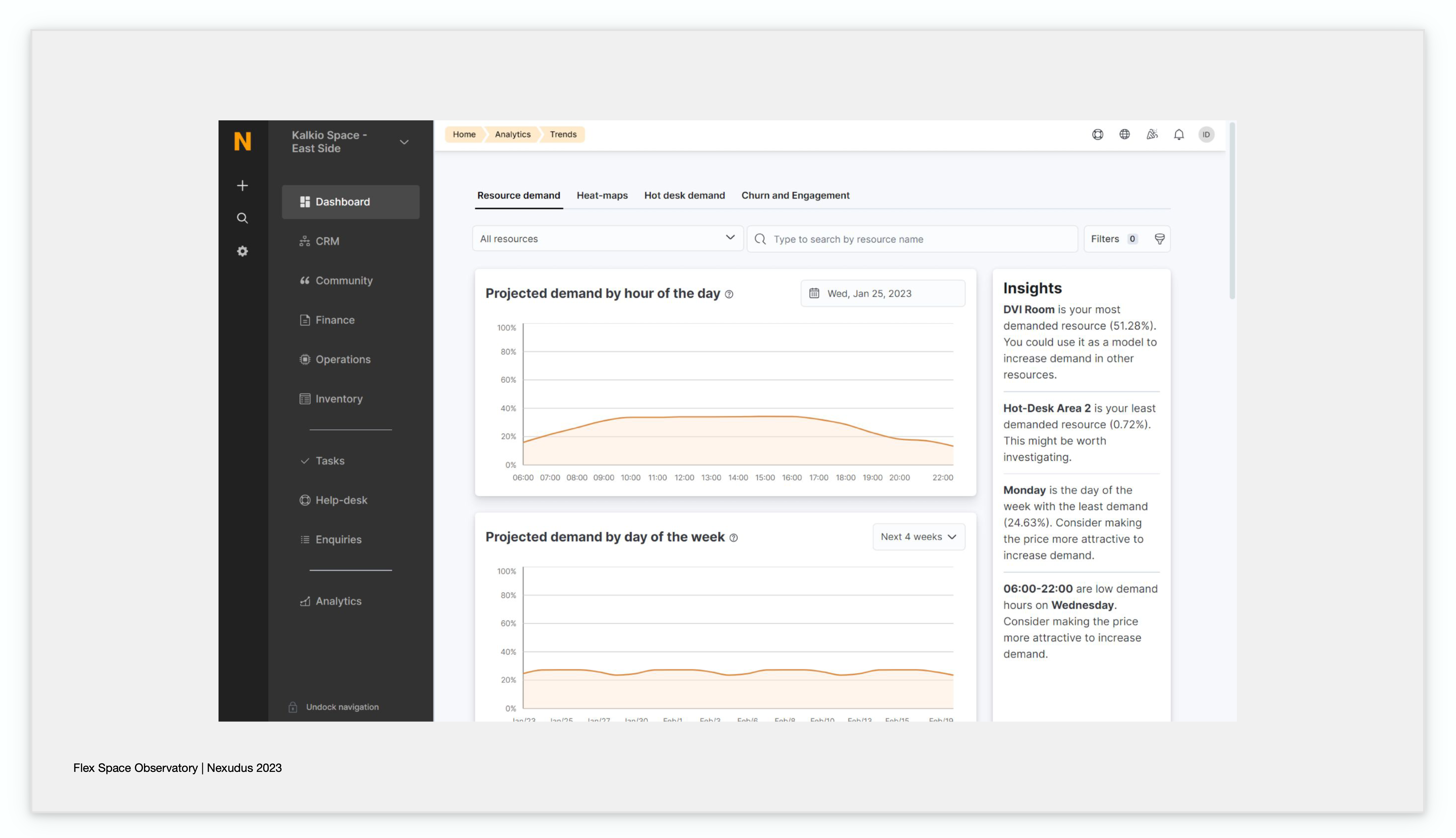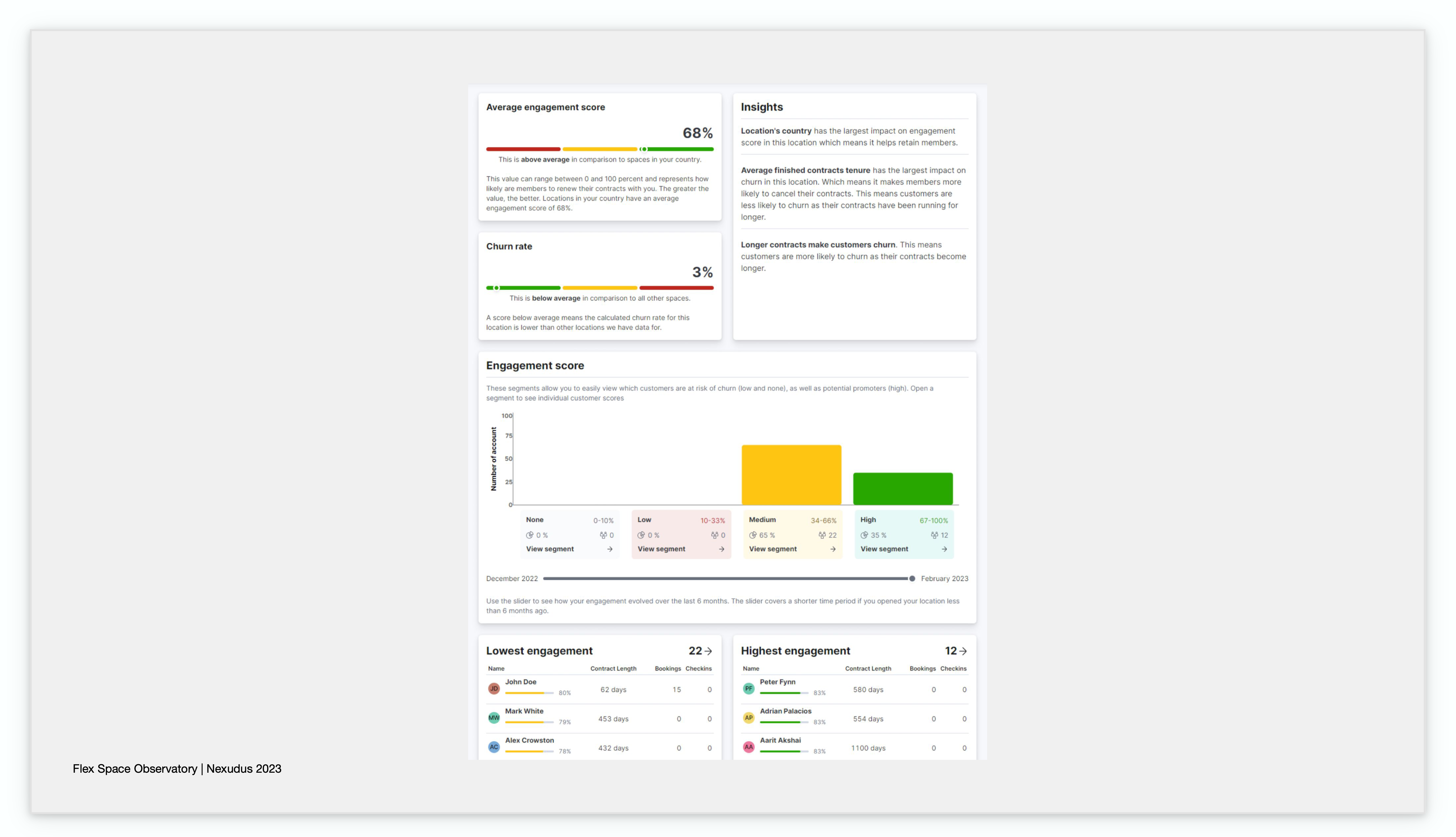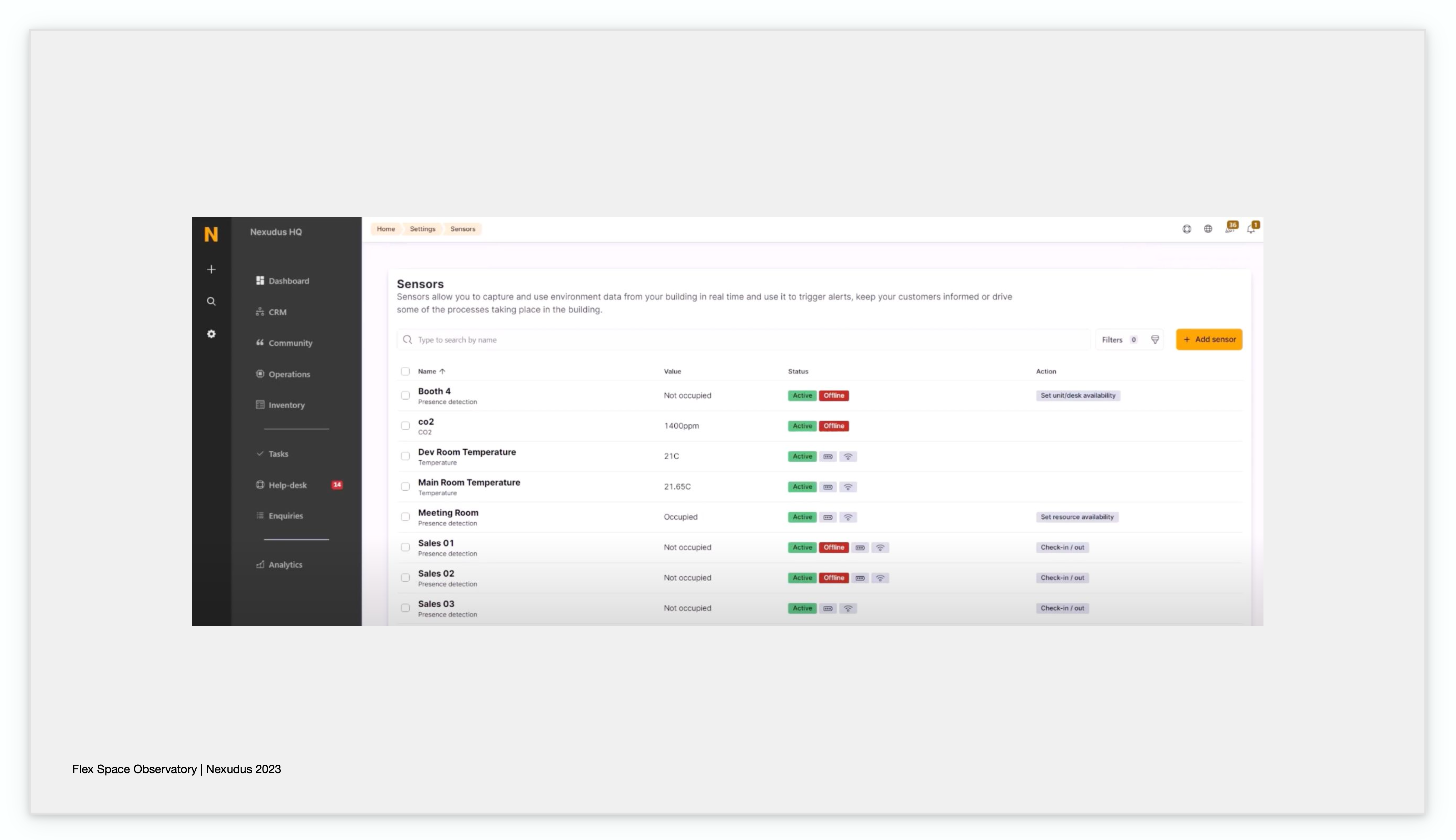The Coworking and Flex Space Data Maturity Journey: Phase 2 - Unlocking the Power of Data & AI in Coworking Spaces
The third article of our four-part series focuses on the second phase of the Data Maturity Journey: The transition from gut instinct to data-driven decision-making. It involves utilising data and AI to understand how your customers interact with your space throughout their lifecycle and, based on that knowledge, making data-driven decisions to optimise space performance, operations, and elevate the member experience.
In the second phase of a business's Data Maturity Path, the previously established Unified Data System from Phase 1 is utilised to advance through a sequence of stages that every business must adopt. This includes Data Monitoring, which tracks business performance; Data Discovery, where analytics tools are used to delve into the unified data to uncover previously unseen patterns, correlations, and insights; Prediction, involving AI models to anticipate future trends and outcomes, and lastly, Actions.
The next article will cover Phase 3 of the path, where we will go in-depth with Data Actionability.
Your Path to a Smarter Workspace.
In our introductory article, we described the importance of embarking on the Data Maturity Journey, a valuable tool for Coworking and Flex Workspace operators to navigate the primary obstacles and challenges across the three phases we have identified to leverage Data as a key driver of business transformation.
The concept of Data Maturity Path is all about an organisation's ability to effectively gather, unify, monitor and analyse data, as well as leverage predictive models to derive actionable insights.
In our previous article, we emphasised the critical role of the initial phase in the Data Value Journey. We underscored the importance of creating a Single Source of Truth to build a comprehensive 360-degree perspective on both customers and space, consolidating and unifying multiple data sources at their origin. This foundational step is a crucial part of the path to harnessing the full potential of data, establishing a robust foundation for future data-driven initiatives and AI-driven business cases.
In today's competitive Coworking and Flex Workspace landscape, businesses continually struggle to leverage data to gain a competitive advantage.
Extracting value from data isn't a one-off action; rather, it involves a journey where each phase provides valuable insights for enhancing your business. Phase 1 has already enabled your business to collect data in a unified manner, gathering data on how your customers engage with your space. This involves aggregating data from a variety of technologies, such as web platforms, CRM systems, email marketing tools, building management operations, booking systems, and billing tools. The data is already stored in your system. Now, the question is: What's the next step for your business in leveraging this data?
Nexudus provides a comprehensive solution articulated into four levels for extracting value from data in the second phase of the Data Maturity Path:
1. Identifying the right KPIs can be challenging.
One of the primary challenges faced by Coworking and Flex Workspaces is the identification of the most relevant Key Performance Indicators (KPIs) for both customer management and business operations.
With a unified data system in place, the challenge shifts to identifying the most critical KPIs that truly matter. Companies often struggle to determine which indicators are most relevant to monitor.
Nexudus offers a variety of templates based on different business categories that track the main KPIs based on its experience helping thousands of customers in the flex workspace industry, making it easier for businesses to monitor their performance effectively. Nexudus Explore comes with predefined and ready-to-use dashboards encompassing useful indicators and charts related to various categories, including booking, billing, CRM, membership, access, occupancy, help desk and more.
In response to this primary challenge, Nexudus offers two initial levels to enhance data utilisation:
a. Utilise Dashboard tools to familiarise yourself with different data sources.
The Dashboard serves as a formidable tool for acquainting yourself with data right from the start of your data value journey. It empowers you to gain insights into your business's performance and supports informed initial decision-making.
.png)
Dashboards and Descriptive Analytics tool within the Nexudus Platform (A UI image with dummy data).
b. Engage in Exploratory data analysis using Nexudus Explore to delve into profound insights and aggregations.
After gaining familiarity with data through the use of dashboards, you'll be equipped to conduct more in-depth analyses using exploratory data analysis (Data Discovery), specifically the Designer feature in Nexudus Explore.
The unified source of data allows you to deploy different analysis aggregations to gain deeper insights. In this regard, Nexudus provides a multi-layered data approach, allowing you to gather insights into four main layers: member, team/account, location, and multi-location analysis.
2. Cultivating a Data-Centric Culture. Transition to Data-Driven Decision Making.
In the transition from data-informed to data-driven decision-making, fostering a data culture within your organisation becomes crucial. Data culture entails providing employees with the tools, dashboards, and resources they need to make data-driven decisions without relying on engineering or data science support.
Democratising data by making it easily accessible throughout the organisation allows for faster, more adaptable, and automated decision-making, enhances agility in responding to market changes, and streamlines the automation of repetitive tasks.
Deriving value from data isn't solely the objective of the analytics department; it's an objective that everyone within the company must incorporate into their daily workflows. User-friendly dashboards enable all team members to access and understand data, guiding immediate decision-making and facilitating business actions.
Establishing trust in your data is very crucial before making decisions based on predictive insights. Ensuring the accuracy and reliability of your data is vital. Without trust in the data, your teams are unlikely to use dashboards, if teams have access to insights but can’t act on them, they can’t drive change. This is why dashboards play an important role at the beginning of this phase, as they make it easier to familiarise yourself with the data and build trust.
3. From Descriptive to Predictive.
Before harnessing the power of advanced analytics, your company needs to become familiar with descriptive analytics. Descriptive analytics involves utilising current and historical data to identify trends and usage patterns within your business. After establishing the KPIs to track and ensuring that your team is confident in using them, the next step is to delve into Artificial Intelligence and advanced analytics capabilities. This will enable you to leverage your data for predictive purposes, granting you the ability to foresee and prepare for future scenarios.
Implementing AI models in-house can be expensive, demanding a specialised team and significant infrastructure investments. To alleviate these challenges, Nexudus has seamlessly integrated an AI module with a wide range of use cases, enabling you to experience immediate benefits.
During this second phase, your company will gain familiarity with the primary KPIs, facilitated by the dashboards provided by Nexudus, along with recommended indicators to track. For instance, you'll have the opportunity to comprehend:
- How many users have booked resources in the past 30 days?
- The count of active members over the last 3 months.
- What new revenue streams have been created in the last month?
This phase represents a significant shift from metrics-based analysis to algorithm-based analysis, where more advanced analytics and insights come into play.
Imagine having the ability to predict how your meeting rooms and resources will perform in the upcoming weeks, identifying the most active members, or even foreseeing member churn in the next 30 days.
Nexudus integrates AI technologies to predict and anticipate your coworking space's performance, enabling proactive data-driven decision-making.
4. The importance of explainability in AI.
In the world of AI, the concept of explainability has emerged as a core of trust and transparency. While AI models are incredibly relevant, their intricate architectures can often operate as "black boxes," making it challenging for users to understand their underlying mechanisms and decision pathways. Explainability in AI aims to demystify these processes, offering clear, intuitive insights into how algorithms arrive at specific output. This is not just about technical transparency but about building a bridge of trust between AI and users. Gaining an understanding of how AI models work will enhance your confidence in the system, encourage broader adoption, and ensure alignment with business goals.
The Nexudus AI module is driven by use cases that emphasise the incorporation of explainability. This emphasis is aimed at providing you with a higher level of confidence and enhancing the decision-making process. For instance, within Nexudus' Churn and Engagement feature, you will discover explanations highlighting the most critical metrics that impact the identification of high-value and churned customers. The purpose of this is not just to identify those who are more likely to churn in the next 30 days; it's also about understanding the reasons behind it, the why.
.png)
During Phase 2 of the Data Maturity Journey, Nexudus provides actionable case studies specifically tailored to optimise your coworking and flexible workspace management by leveraging data:
a. Resource Demand Prediction

Artificial intelligence tools within the Nexudus Platform (A UI image with dummy data).
Predicting how resources will perform and addressing underutilised or overbooked spaces can be a real struggle.
Nexudus' AI-powered Resource Demand feature empowers you to make data-driven decisions about your resources. It identifies which resources are in high or low demand and pinpoints peak and off-peak hours or days. This dashboard is complemented by dynamic pricing, automatically adjusting rates to optimise revenue based on demand.
b. Hot-Desking Demand Prediction
Identifying overbooked or underutilised desks, areas, and floors, and understanding what makes certain resources popular can be elusive.
By analysing historical data and member preferences, Nexudus' Hot-Desking Prediction feature improves the member experience. It ensures available workspaces when needed, optimises allocation, and fosters a more dynamic and efficient workspace environment.
c. Identifying High-Value and Churn Customers

Artificial intelligence tools within the Nexudus Platform (A UI image with dummy data).
Identifying members at risk of leaving or recognising your most valuable customers can be a challenging task.
The Churn and Engagement dashboard provides clear insights into which members are likely to churn in the next 30 days, as well as how high-value customers utilise your space. Early identification of potential churners allows for proactive retention efforts, minimising member attrition and preserving revenue. It also facilitates targeted communication and personalised offers.
This feature provides anonymised benchmark data to help you compare your space with similar spaces.
d. Space Performance (Sensors Data)

Lacking visibility into occupancy and environmental data within your coworking space can limit effective space optimisation.
Using sensor data, this use case evaluates how different areas within your workspace are used. It then offers recommendations for optimising the layout and configuration of your space to enhance performance. This optimisation leads to an improved member experience, increased space efficiency, and higher revenue. Nexudus is continuously working to expand the range of sensor integrations, ensuring a comprehensive understanding of your space's dynamics.
Phase 2 of the Data Maturity Journey represents a significant leap forward in unlocking the full potential of data in the Coworking and Flexible Workspace landscape. It's a transformative phase where data evolves from being a passive asset to an active driver of change and improvement in your business. The ability to harness data for data monitoring, discovery, predictive insights and data-driven decision-making empowers organisations to offer a more dynamic and personalised experience to their members while optimising space utilisation.
All the tools and features Nexudus provides during this phase are designed to help your organisation move from gut instinct to data-driven decision-making, thus enabling you to experience the value of data.
In the final article of this series, we will delve into Phase 3, where data is operationalised with workflows and automation, taking coworking spaces beyond insights and using data as a catalyst for operational excellence, member satisfaction, and building performance. The next phase involves moving beyond the integration and visualisation of data to Activate Insights, enabling hyper-personalised experiences and fostering building optimisation.
Join us on this transformative journey, and let Nexudus be your guide as we unlock the potential of data in the Coworking and Flexible Workspace landscape.
Related posts
-
5 Common Mistakes When Implementing Cloud Printing in Your Coworking Space (and How to Avoid Them)
Discover how to avoid common cloud printing mistakes in coworking spaces. Learn how Nexudus integrations with PaperCut and Ezeep can optimise printing efficiency and cost control.
-
Visitors Are Knock-Knock-Knockin' at Your Coworking Door
At Nexudus, we process close to 100,000 visitor interactions monthly. Managing these interactions isn’t easy, but some key strategies can help streamline the process for visitors and customers. Here are five key points we’ve identified and how technology can help make the experience smooth for everyone involved.
-
Customization and Learning: 2 Powerful Strategies to Boost Tenant Satisfaction in Your Coworking and Flex Space
Two key strategies that have proven particularly effective in enhancing tenant satisfaction are customisation and learning. By delivering customised services to your members and helping them learn and thrive within your space’s community, you can create a coworking space where tenants feel valued and invested. In this article, we’ll explore how these strategies can be implemented and how you can make the most of your Nexudus account to help you achieve this.
-
Top 5 Must-Have Meeting Room Technologies for Your Coworking Space
Discover the latest trends in office meeting room technology and design. From smart booking systems to high-speed Wi-Fi, learn how to create dynamic and inclusive meeting spaces that enhance collaboration and productivity in the era of hybrid work.
-
5 Ways a Coworking Software Can Supercharge Your Members' Experience
Discover how coworking software can transform your coworking space. Learn 5 key ways it boosts member satisfaction and productivity. Find out more now!
-
The data iceberg: why advanced analytics are the only way to understand a space
When all your data is in one place, having a collected visual guide for each of your data queries can help reveal valuable insights at a glance.